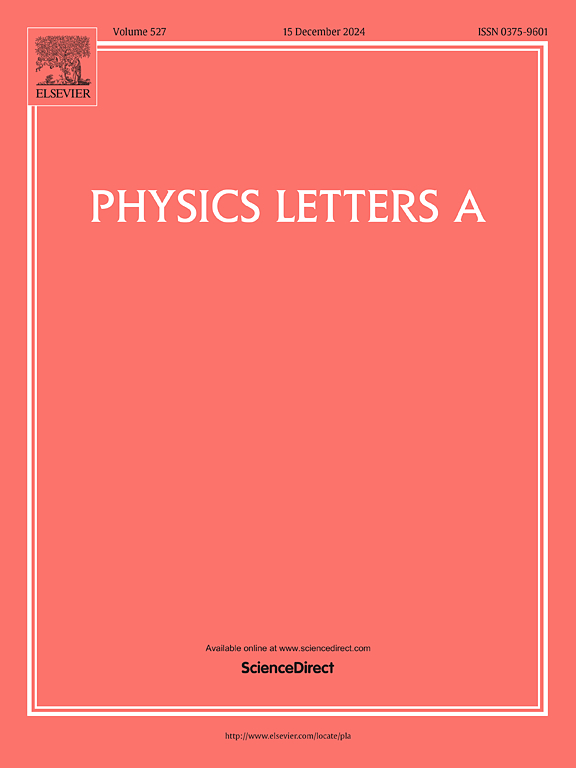IF 2.3
3区 物理与天体物理
Q2 PHYSICS, MULTIDISCIPLINARY
引用次数: 0
摘要
工业的快速发展大大增加了对可再生清洁能源的需求。高效利用太阳能这一可再生的清洁资源,可以极大地推动国家发展。由于目前太阳能的吸收和利用效率较低,因此提高太阳能的吸收和利用效率成为研究的重点。本研究介绍了一种利用金字塔结构的宽带太阳能吸收器,并通过有限差分时域(FDTD)方法模拟了其吸收特性。选择的波长范围从 280 纳米到 3000 纳米。在 280 纳米到 2097 纳米的波长范围内,吸收器实现了超过 99.73 % 的超高平均吸收率。在 280 纳米到 3000 纳米的波长范围内,平均吸收率超过 99.55 %。此外,在 300 纳米到 334 纳米的波长范围内,吸收器的吸收率超过 99.99 %。对电场和磁场的分析表明,高吸收效率主要归因于 W 金字塔中心传播的表面等离子体共振、每个金字塔之间的间隙表面等离子体共振以及 W 金字塔和介电层之间的表面等离子体共振。此外,当温度达到 1000 K 时,吸收器的热辐射效率高达 95.90%。在 AM1.5 照明条件下,280 纳米至 3000 纳米波段的吸收率超过 99.56%。该吸收器在 0° 至 30° 的入射角范围内都能保持较高的吸收水平,并且对偏振不敏感。所提出的结构为基于超材料的太阳能转换设备的发展提供了新的前景。本文章由计算机程序翻译,如有差异,请以英文原文为准。
A fully symmetric solar absorber for thermophotovoltaic power generation
The swift pace of industrial growth has significantly increased the demand for renewable and clean energy sources. The efficient use of solar energy, a renewable and clean resource, can significantly advance national development. Enhancing solar energy absorption and utilization efficiency is a crucial research focus due to its current low efficiency. This study introduces a broadband solar absorber utilizing a pyramid structure, with its absorption characteristics simulated via the Finite Difference Time Domain (FDTD) method. The chosen wavelength range spans from 280 nm to 3000 nm. Within the 280 nm to 2097 nm range, the absorber achieves an ultra-high average absorption rate exceeding 99.73 %. In the 280 nm - 3000 nm range, the average absorption rate is higher than 99.55 %.Furthermore, the absorber exhibits an exceptional absorption rate exceeding 99.99 % in the 300 nm - 334 nm wavelength range. Analysis of electric and magnetic fields reveals that the high absorption efficiency is mainly due to propagating surface plasma resonance at the center W pyramid, gap surface plasma resonance between each pyramid, and surface plasma resonance between the W pyramid and the dielectric layer. Additionally, when the temperature reaches up to 1000 K, the absorber demonstrates a thermal radiation efficiency of 95.90 %. Under AM1.5 illumination conditions, absorption within the 280 nm to 3000 nm band surpasses 99.56 %. The absorber maintains high absorption levels across incident angles from 0° to 30° and is insensitive to polarization. The proposed structure offers novel perspectives for the advancement of metamaterial - based solar energy conversion devices.
求助全文
通过发布文献求助,成功后即可免费获取论文全文。
去求助
来源期刊

Physics Letters A
物理-物理:综合
CiteScore
5.10
自引率
3.80%
发文量
493
审稿时长
30 days
期刊介绍:
Physics Letters A offers an exciting publication outlet for novel and frontier physics. It encourages the submission of new research on: condensed matter physics, theoretical physics, nonlinear science, statistical physics, mathematical and computational physics, general and cross-disciplinary physics (including foundations), atomic, molecular and cluster physics, plasma and fluid physics, optical physics, biological physics and nanoscience. No articles on High Energy and Nuclear Physics are published in Physics Letters A. The journal''s high standard and wide dissemination ensures a broad readership amongst the physics community. Rapid publication times and flexible length restrictions give Physics Letters A the edge over other journals in the field.
 求助内容:
求助内容: 应助结果提醒方式:
应助结果提醒方式:


